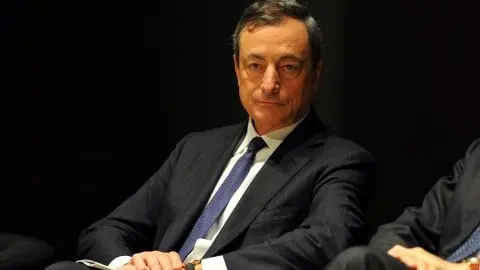ECB meeting: Increased alertness
The European Central Bank has woken up to the new reality of increased uncertainty, and become more dovish in the process. At the same time, the bank has indirectly suggested that it's as much in the dark about the growth outlook as anyone else
Today’s ECB meeting did not bring any new action but marked a clear change in the ECB’s growth assessment. While back in December, the bank's growth outlook for 2019 was still very upbeat- forecasting 1.9% GDP growth- it's now less optimistic. In fact, the ECB has finally caught up with reality. Reality is not yet a protracted slowdown but rather an unprecedented list of possibly severe uncertainties. This list is well-known: global trade tensions, a Chinese slowdown, the German automotive sector and Brexit. These risks are not new but ECB President Mario Draghi stressed that the ECB’s biggest concern now is that these risks could materialise and he is concerned about the persistence of general uncertainty. The latter clearly runs the risk of becoming a self-fulfilling prophecy, eventually undermining still solid domestic demand through a negative sentiment loop.
At the same time, Draghi also said that a part of the ECB’s Governing Council still does not exclude a more benign outcome and also stated that the probability of a recession was still low. In sum, the increased uncertainty, as well as the persistence of the uncertainty, motivated the ECB to shift its balance of risks to the growth outlook to the downside. To be precise, the ECB used a small linguistic trick, stating that “the risks have moved to the downside”. This is slightly stronger than the December “risks are moving to the downside” but not necessarily as strong as the usual “the balance of risks is tilted to the downside”. A small but significant detail. Welcome to the world of ECB watchers.
This is the first time since April 2017 that the ECB is using “downside risks” in its growth assessment. Actually, except for the period between April 2017 and December 2018, risks to the ECB’s growth assessment have always been to the downside since Mario Draghi took office.
Still reluctant to decide on new liquidity operations
Ahead of today’s meeting, there had been a discussion about the possibility of new targeted and longer-term liquidity operations. Here, the ECB still seems to be very reluctant to take any imminent decision. Several times during the press conference, Draghi stressed that banks were now stronger than ten years ago. More interesting, Draghi literally said that “several members mentioned the issue”. Remember that back in December it was “some” and in October it was “a couple”. No significant change here.
ECB is on higher alert
With today’s meeting, the ECB has joined the crowd of concern. The return of a downside risks to the growth assessment does not, yet, signal any policy changes but only a slight easing bias. Or to put it differently: the ECB also does not know where the eurozone economy is heading. Therefore, in terms of actual steps, not a lot has changed. The ECB will try to buy as much time as possible in the coming months to see how the March folly (Brexit, US-China trade talks, German automotives) will evolve. We will probably have to wait until the June meeting before the dust has settled. Until then, the ECB will be on higher alert than before. However, it will require a very benign outcome on all these risk factors to see Draghi hiking rates before he leaves office.
This publication has been prepared by ING solely for information purposes irrespective of a particular user's means, financial situation or investment objectives. The information does not constitute investment recommendation, and nor is it investment, legal or tax advice or an offer or solicitation to purchase or sell any financial instrument. Read more
Download
Download snap
24 January 2019
In case you missed it: The new reality This bundle contains 8 Articles